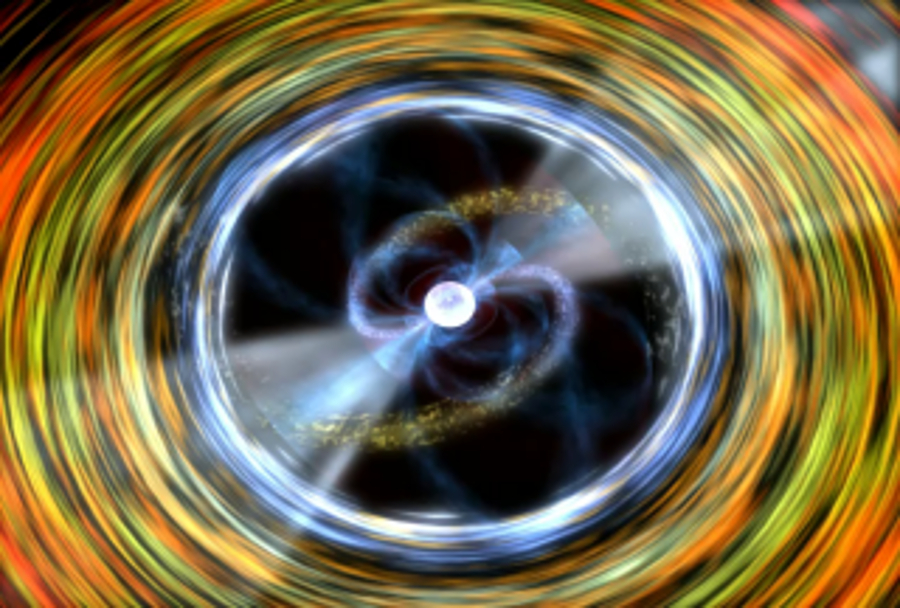
 Credit: NASA
Credit: NASA
Turn on the Radio
A neutron star is the highly compressed burned-out core of a dead, massive star. Though neutron stars are about as massive as the sun, they are tiny, about the size of a large city. This means that neutron stars are extremely dense, so that a teaspoonful of neutron-star stuff contains about as much mass as the entire population of earth. A neutron star's intense gravitational field enables it to spin very rapidly without breaking up, up to hundreds of times per second. Neutron stars can possess extremely strong magnetic fields as well. If the neutron star is orbiting a normal star, the intense gravity of the neutron star can strip material from the companion. As this material swirls onto the neutron star channeled by the neutron star's magnetic field (as shown above in an artistic interpretation), it can act to increase the neutron star's rotational speed. The accreting matter can also hit the surface of the neutron star, producing high-energy X-ray emission from hot spots on the neutron star's surface. As the neutron star rotates, these hot spots can produce observable pulses of X-ray emission. As the system ages, and the mass transfer declines, the spun-up neutron star can be seen as a radio pulsar, in which beams of low-energy radio emission produced at the north and south magnetic poles sweep the sky like a lighthouse beacon. This transition should take millions of years. However, astronomers have now seen an unusual neutron star binary in which the transition from accreting X-ray emitting pulsar to non-accreting radio pulsar was caught in the act. This object was initially detected as an X-ray source by the INTEGRAL satellite observatory, and dubbed IGR J18245-2452. Follow-up observations by the Swift satellite and by the Chandra X-ray observatory refined the location of this source, while observations with the XMM-Newton satellite observatory identified X-ray pulses from the object and showed that the object was a previously-identified radio pulsar called PSR J1824-2452I. So this single object at times shows X-ray pulses and radio pulses. Astronomers believe this dual identity is the result of variable mass flow from the companion. When the mass transfer from the companion is high, the pulsar's radio emission is quenched, but its X-ray emission is high; when the mass transfer rate drops, the X-ray emission declines but the radio emission can be more easily observed. This system helps astronomers understand in detail how a neutron star accretes mass from its companion, and how this mass transfer affects the evolution of the magnetic field and spin of the neutron star.
Published: September 30, 2013
<
HEA Dictionary ● Archive
● Search HEAPOW
● Other Languages
● HEAPOW on Facebook
● Download all Images
● Education ● HEAD
>

Each week the HEASARC
brings you new, exciting and beautiful images from X-ray and Gamma ray
astronomy. Check back each week and be sure to check out the HEAPOW archive!
Page Author: Dr. Michael F. Corcoran
Last modified Monday, 26-Feb-2024 17:23:04 EST


